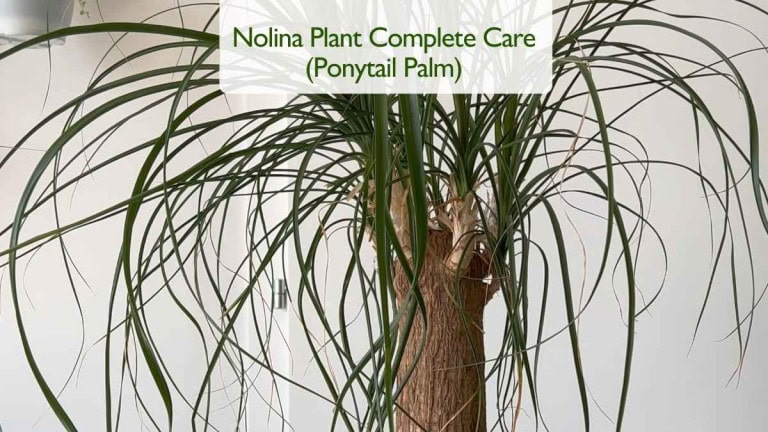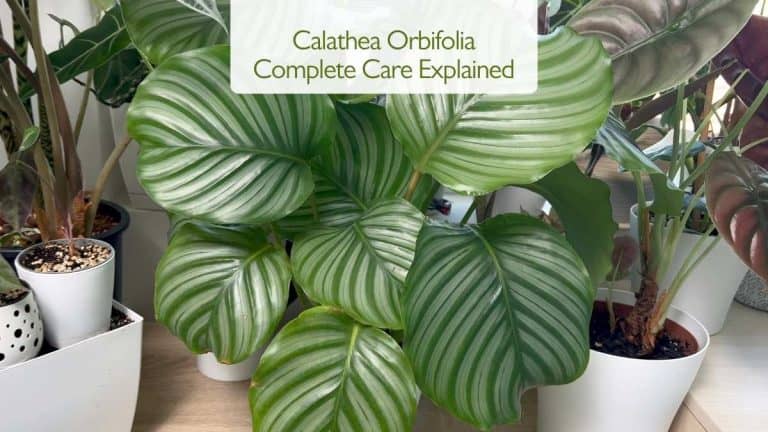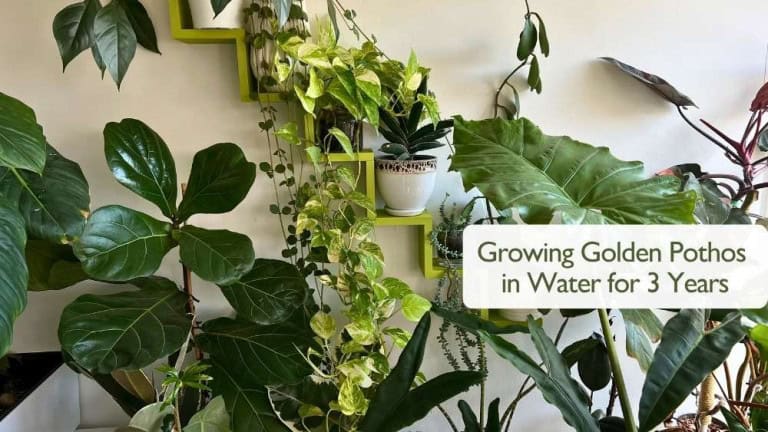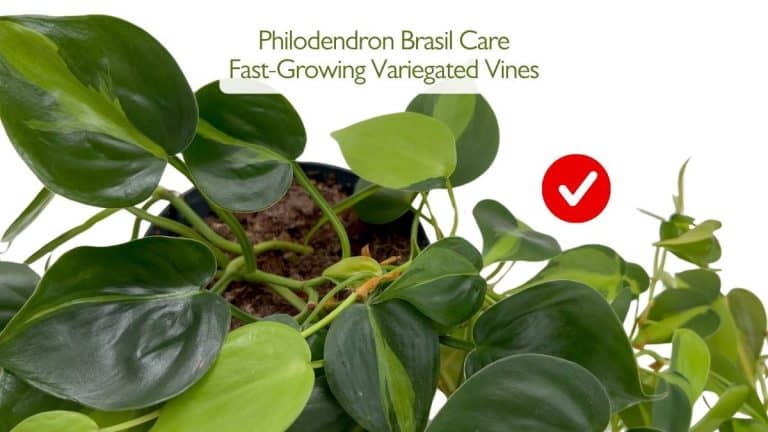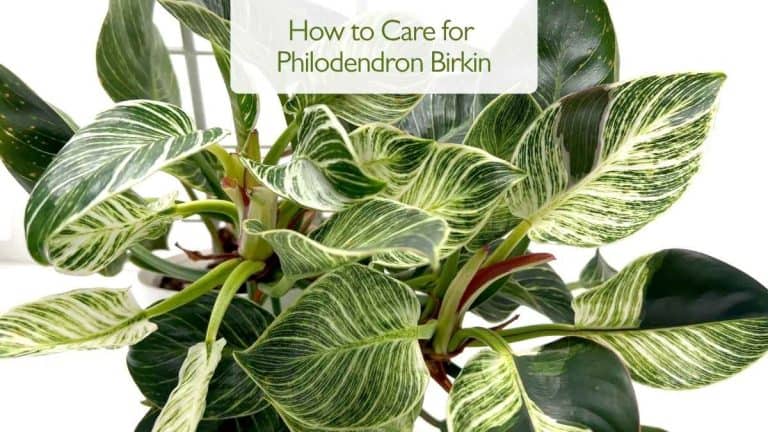Nolina Plant Care (Ponytail Palm): Complete Indoor Care Guide
If you’ve ever wanted a unique, sculptural plant that doubles as a conversation piece, Nolina plant care (also known as ponytail palm) is just what you need. Despite its common name, the ponytail palm (Beaucarnea recurvata) is not a true palm but a succulent-like plant from the Asparagaceae family. Native to the dry regions of Mexico, it thrives on neglect – making it a perfect choice for busy plant parents – but with the right care, it can become a stunning long-term companion. This complete guide will help you master Nolina plant care so your ponytail palm stays healthy and thriving.
👉 For visuals, watch the video below where I show my own Nolina plants and walk through the full care routine step by step:
Click here to watch the video on YouTube
My Experience with Nolina
I’ve been growing Nolina plants for nearly a decade, and they are still among my favorite houseplants. My first Nolina was a gift from my sister in 2016, and she’s now a beautiful seven-year-old plant. My second Nolina has been with me for almost ten years. At one point, her long leaves were regularly chewed by my cats, and she struggled to look her best. Once I moved her to a safer spot, she bounced back beautifully and started thriving again.
This taught me an important lesson: if you have curious pets, keep your Nolina in a safe, elevated place so the leaves don’t get damaged.
Light Requirements
Light plays a big role in successful Nolina plant care. These plants love bright, indirect light and can tolerate a few hours of direct sun. Too much harsh sunlight can cause leaf scorch, leaving brown patches. Too little light will slow growth and make the plant look weak.
The best spot is near a bright window – I keep mine in a west-facing window where they receive strong, indirect light and gentle afternoon sun. If natural light is limited, you can supplement with a grow light to keep growth healthy. Good lighting is one of the most important steps in successful Nolina plant care, as it keeps growth steady and leaves green.
Watering and Moisture

When talking about Nolina plant care, watering is often the number one mistake people make. Getting watering right is central to proper Nolina plant care, since this plant stores water in its bulbous caudex and prefers dry soil. Always let the soil dry almost completely between waterings. Overwatering is the most common cause of root rot.
When I water, I do it thoroughly, then empty the saucer to make sure there’s no standing water. In winter, I reduce watering even more, as the plant is in a resting phase.
💡 Tip: For a detailed watering guide that applies to most houseplants, check out my article on Houseplants Watering Tips.
Monthly Care Routine
A simple monthly routine keeps Nolina looking its best. I remove any yellow or dry leaves – if they are very dry, I gently pull them off, otherwise I use sharp scissors to trim them. Gloves are a must, since Nolina leaves can be sharp.
I then give the plant a gentle shower. This removes dust, increases humidity, and washes off pests. After it drains completely, I return it to its spot and spray the leaves with neem oil solution. This prevents mealybugs, spider mites, and scale, and gives the leaves a healthy shine. Always spray in the evening or when the plant is out of direct sun to avoid burns. Following this routine once a month is a simple way to keep your Nolina plant care on track year-round.
Soil and Repotting
One of the key parts of proper Nolina plant care is choosing the right soil and repotting schedule. The right soil is key to Nolina’s health. Heavy, moisture-retentive mixes are a recipe for root rot. I use a mix of two parts potting soil and one part sand or perlite for fast drainage. Choosing the right chunky, airy soil mix is another detail that defines good Nolina plant care.
Repotting is needed every two to three years, ideally in spring. Choose a pot only slightly larger than the current one – Nolina prefers to be a bit root-bound. After repotting, water well once and then allow the soil to dry before the next watering.
Fertilizing
Another important part of Nolina plant care is giving the right amount of fertilizer during the growing season. Balanced feeding is a key practice in Nolina plant care, but timing is just as important as nutrients. During spring and summer, feed once a month with a balanced liquid fertilizer diluted to half strength. Avoid fertilizing in autumn and winter.
If you prefer natural options, take a look at my guide on Organic DIY Fertilizer for Houseplants, which is safe and effective for Nolina and other succulents.
Pruning and Grooming
Pruning is mostly about keeping the plant tidy and healthy. Regularly remove dry or yellowing leaves. If tips turn brown, trim them carefully but leave a small margin of green to prevent further damage. Wipe the leaves with a damp cloth every few weeks so they can absorb light more efficiently.
Growth and Lifespan
Nolina is a slow-growing plant, but that’s part of its charm. With patience, your plant will develop a thicker caudex and a beautiful fountain of leaves. Indoors, it can grow 3–5 feet tall, while outdoor specimens in warm climates can reach over 10 feet. These plants can live for decades when properly cared for – some are known to be over 50 years old! Knowing how slowly this plant grows is an essential piece of Nolina plant care, so you can be patient and enjoy the process.
Propagation
Propagating Nolina is a bit tricky because it doesn’t produce many offsets indoors, but it is possible when pups form at the base of a mature plant. Wait until the pups are a decent size, then carefully separate them with a clean, sharp knife. Plant them in a well-draining mix and keep the soil lightly moist until they root.
👉 You can watch my video below where I show exactly how I separated and planted a Nolina pup step by step:
Click here to watch the video on YouTube
Toxicity and Pet Safety
Good news for pet owners: Nolina (ponytail palm) is considered non-toxic to cats and dogs according to the ASPCA. That said, pets may still chew on the leaves, causing damage to the plant and potential stomach upset for the pet. Keep the plant out of reach if you have curious animals, as I learned with my own cats. For a full list of pet-safe plants and more details on plant toxicity, see my article on Pet-Friendly Houseplants: Safe vs. Non-Toxic Indoor Plants
Pest Prevention
Nolina’s long, narrow leaves can collect dust and become a hiding place for pests. Regular cleaning and occasional neem oil sprays prevent most infestations. If you see mealybugs or spider mites, isolate the plant and treat immediately to avoid spreading pests to your other houseplants.
Common Problems and Solutions
Root rot, brown leaf tips, yellowing leaves, and leaf scorch are the most common issues. Most of them can be traced back to improper watering or light levels. Adjusting care quickly will usually solve the problem.
💡 Related Reading: If you want a deep dive into common issues like yellowing leaves, brown tips, and root rot, read my latest post on Ponytail Palm Care Problems – it covers the 5 most common mistakes and how to fix them step by step.
👉 For a detailed look at these issues and how to fix them, watch my video below where I cover the 5 most common ponytail palm problems and their solutions:
Click here to watch the video on YouTube
Final Thoughts
Once you understand the basics of Nolina plant care, you’ll see just how easy it is to grow this unique plant. Nolina plant care is simple and rewarding once you understand its needs for light, water, and soil. With the right routine, your plant will thrive for many years, becoming a stunning focal point in your home.
Explore More Music for Your Plants & Stay Connected!
Check out my Playlist: Music for Plants and find the perfect tunes to help your plants and yourself thrive.
Don’t forget to visit my YouTube Channel Plant House & Garden and subscribe — your support means the world to me!
Connect with me on social media for more plant care tips and music updates: Instagram | Facebook | X | Pinterest | Reddit | TikTok
Love plants? Love music? Don’t miss out on new updates — hit subscribe and follow now to keep your plants happy and your space vibrant!

